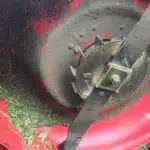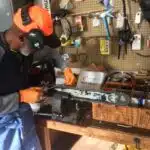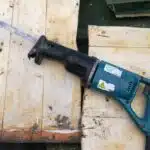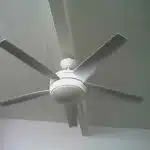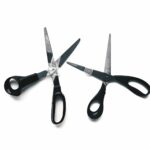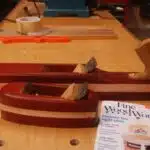Hand pruners are an essential tool for any gardener. These pruning shears are used to trim and shape plants, shrubs, and trees. However, over time, the blades of hand pruners can become dull or coated with sap and debris. It is essential to clean and sharpen your hand pruners regularly to ensure they remain effective in maintaining the health of your garden.
As a gardening tool care professional, it is my pleasure to share with you some tips on how to effectively clean and sharpen hand pruners. In this article, we will discuss some simple steps you can take to bring back the sharpness and efficiency of your hand pruners. Whether you are a seasoned gardener or just starting out, these tips will help you maintain the quality of your gardening tools so that they may continue to serve you in your pursuit of a thriving garden.
Importance Of Maintaining Your Gardening Tools
Maintaining your gardening tools is crucial to ensuring that they function properly and last for a long time. Neglecting your tools can lead to damage, rust, and even accidents while using them. Therefore, it is important to have a proper tool storage system and a maintenance schedule.
Tool storage plays a critical role in maintaining the life of your gardening tools. It is essential to keep them dry and clean to prevent rust formation. Additionally, storing them in a cool and dry place will help prevent damage from exposure to extreme temperatures or humidity. A good storage system will also make it easier for you to locate your tools when you need them.
In addition to proper storage, keeping up with a maintenance schedule is vital for the longevity of your gardening tools. Depending on the frequency of use, you may need to sharpen blades, oil moving parts, or tighten screws regularly. Not only will regular maintenance extend the life of your tools, but it will also ensure that they are functioning correctly when you need them most. By implementing a consistent maintenance schedule, you can avoid unexpected repairs or replacements down the line.
As we move forward in this article, we will delve into different types of hand pruners and how to maintain them properly. With adequate care for your pruning tools, they will be ready whenever you need them for trimming branches or shaping shrubs in your garden.
Different Types Of Hand Pruners
- Bypass pruners are a popular type of hand pruner that use curved blades like the shape of a scissor to cut branches.
- Anvil pruners use a single sharpened blade that cuts against a flat surface, providing more pressure to cut through thicker branches.
- Ratchet pruners are a type of anvil pruner that use multiple ratcheting blades to provide a powerful and clean cut to branches.
- All types of hand pruners should be regularly cleaned and sharpened to ensure maximum efficiency and safety.
- Cleaning should involve wiping down the blades with warm soapy water and applying a light oil to the blade pivot joints.
- Sharpening of the blades should be done with a whetstone, ensuring the blade is honed to the correct angle and sharpness.
Bypass Pruners
As a gardening tool care professional, I cannot stress enough the importance of pruner maintenance. Bypass pruners are one of the most commonly used hand pruners, and it is important to keep them clean and sharp to ensure effective pruning techniques. Before starting any maintenance work on your bypass pruners, make sure that they are completely disassembled.
To clean your bypass pruners, use a soft cloth or sponge dipped in warm soapy water. Thoroughly wipe off any dirt or debris from the blades and handles. Once you have finished cleaning them, dry them off with a towel and apply a thin layer of oil on the blades to prevent rusting. It is also advisable to sharpen the blades using a sharpening stone or file.
Pruning techniques can greatly affect how well your bypass pruners perform. Always remember to make clean cuts by using only the tips of the blades and cutting at an angle away from the plant. Avoid crushing or tearing branches as it may damage both your plants and your hand pruners. By taking good care of your bypass pruners and practicing proper pruning techniques, you can maintain healthier plants in your garden while prolonging the life of your hand pruners.
Anvil Pruners
As a gardening tool care professional, it is essential to be familiar with the different types of hand pruners and their maintenance. Anvil pruners are another common type of hand pruner that many gardeners use. They work by having a sharp blade pressing down onto a flat surface or “anvil,” which allows for cutting thick branches and stems with ease. Just like bypass pruners, anvil pruners require maintenance to ensure optimal performance.
To maintain your anvil pruners, start by disassembling them completely. Use warm soapy water and a soft cloth or sponge to clean off any dirt and debris from the blades and handles. Dry them off with a towel and apply a small amount of oil on the blades to prevent rusting. It is also crucial to sharpen the blades using a sharpening stone or file regularly. Some of the best anvil pruner brands include Felco, Fiskars, and Corona.
When using anvil pruners, it is essential to practice proper pruning techniques to avoid damaging both your plants and your hand tool. Remember always to cut cleanly by using only the tips of the blades while cutting at an angle away from the plant. Avoid crushing or tearing branches as it may damage both your plants and your hand pruners. With proper anvil pruner maintenance and pruning techniques, you can ensure healthier plants in your garden while prolonging the life of your tools.
Ratchet Pruners
In addition to anvil and bypass pruners, ratchet pruners are another type of hand pruner used by many gardeners. These pruners work by using a ratcheting mechanism that allows for easier cutting of thicker branches and stems. One of the advantages of ratchet pruners is that they require less effort to use, making them ideal for those with weaker grip strength or arthritis. However, one disadvantage is that they may not be as precise as other types of hand pruners.
When choosing the right ratchet pruners for your needs, consider the size and shape of your hands, as well as the diameter of the branches you will be pruning. Look for pruners with ergonomic handles and a comfortable grip. It is also important to choose high-quality brands such as Fiskars or Felco to ensure durability and optimal performance.
To maintain your ratchet pruners, follow similar steps as with anvil and bypass pruners. Disassemble them completely, clean off any dirt or debris with warm soapy water, dry them off thoroughly, and apply oil to prevent rusting. Sharpen the blades regularly using a sharpening stone or file to ensure clean cuts. By properly maintaining your ratchet pruners and choosing the right ones for your needs, you can ensure healthy plants in your garden while prolonging the life of your tools.
Signs Your Hand Pruners Need Cleaning And Sharpening
The key to keeping your hand pruners in top condition is regular maintenance. Proper maintenance ensures that the blades remain sharp, the handles stay clean, and the tool functions smoothly. Neglecting these steps can lead to a decrease in cutting efficiency and even damage to the pruner. Therefore, it is crucial to perform regular cleaning and sharpening of hand pruners.
One important aspect of maintenance is recognizing when your hand pruners need cleaning and sharpening. Signs may include difficulty in making clean cuts, blades that stick together or are difficult to open and close, visible rust or damage on the blades, and handles that feel sticky or slippery. If any of these symptoms arise, it is time for some proper maintenance.
There are various techniques for sharpening hand pruners such as using a file or a sharpening stone. Regardless of the method used, it’s essential to maintain a consistent angle throughout the process. The correct angle will depend on the type of blade on your hand pruner; therefore, it’s essential to research this information before starting any sharpening procedure. Overall, regularly cleaning and sharpening your hand pruners will increase their longevity and ensure that they function correctly when you need them most.
Moving forward from maintaining your pruning shears’ sharpness and cleanliness, let’s discuss what tools you’ll need for this task.
Necessary Tools And Materials
Tools and materials are essential for every gardener to have on hand, and this is especially true for those who want to maintain their hand pruners. Having the right tools can make a significant difference in how well you clean and sharpen your pruners. To begin with, you’ll need gardening gloves to protect your hands from any sharp edges or blades. Additionally, safety goggles are necessary to protect your eyes from any debris that may fly during the cleaning process.
The following is a nested bullet point list of three sub-lists outlining the necessary tools and materials needed for cleaning and sharpening hand pruners:
Cleaning Materials:
Soft-bristle brush
Soap or detergent solution
Water
Sharpening Materials:
Sharpening stone or file
Lubricating oil
Clean cloth
Additional Tools:
Wire brush
Rust remover (if required)
Screwdriver (to disassemble)
As a gardening tool care professional, it’s my responsibility to ensure that gardeners understand the importance of having these tools on hand. Not only will they help you maintain your pruners, but they also ensure that you remain safe while doing so. Taking care of your pruners is not only beneficial for their longevity but also ensures that they function correctly when used on plants.
With all this said, it’s time to start getting our hands dirty by disassembling our hand pruners. Understanding how to take them apart is an important first step in cleaning and sharpening them correctly. By doing so, we can access all areas of the tool and ensure that every part receives proper attention throughout the process.
Step 1: Disassembling Your Hand Pruners
Proper disassembly is key to cleaning and sharpening your hand pruners. Before you start, make sure you have a clean, flat surface to work on. Begin by opening the pruners and locking them in place. Locate the bolt or screw that holds the two blades together and use a screwdriver or wrench to remove it.
Once the bolt or screw has been removed, separate the blades carefully, making sure not to damage any of the parts. Clean each individual part using a soft-bristled brush and warm, soapy water. Be sure to scrub away any debris or sap buildup that may have accumulated over time.
After cleaning each part thoroughly, it’s time to reassemble your pruners. Start by aligning the two blades together and securing them with the bolt or screw you removed earlier. Once secured, test your blade sharpness by gently cutting through a small twig or branch. If the blade cuts cleanly all the way through without crushing the wood, then congratulations! Your pruners are ready for use once again.
Transition: Now that you’ve successfully disassembled and reassembled your hand pruners, it’s time to move onto step two: cleaning the blades and other parts.
Step 2: Cleaning The Blades And Other Parts
- To clean the blades and other parts of hand pruners, an effective approach is to soak the parts in warm water with a mild detergent.
- After soaking, scrubbing the parts with a soft-bristled brush will help to remove debris and dirt.
- To prevent rust, the parts should be dried thoroughly after cleaning and before oiling.
- Once the parts are dried, apply a light coating of oil to all of the metal components to prevent rust.
- A quality oil for this purpose should be chosen carefully because some oils can break down over time and become sticky.
- To sharpen the blades of the hand pruners, a sharpening stone should be used to keep the blades in top condition.
Soaking
As a gardening tool care professional, I understand the importance of keeping your hand pruners clean and sharp. One of the best ways to get rid of dirt and debris on your blades is by soaking them in a solution. Soaking has several benefits, including loosening any stuck-on residue, disinfecting the blades, and preventing rust.
When it comes to choosing the best soaking solutions for your hand pruners, there are many options available. You can use warm soapy water, rubbing alcohol, or even vinegar. Warm soapy water works well for removing dirt and grime from your blades while rubbing alcohol is great at killing bacteria and germs. If you’re dealing with rust on your pruners, try soaking them in vinegar for a few hours to break down the rust.
Soaking is an important step in cleaning and maintaining your hand pruners. Not only does it help remove dirt and grime from your blades, but it also disinfects them and prevents rust from forming. By choosing the best soaking solutions for your needs, you can ensure that your hand pruners stay sharp and ready for use whenever you need them.
Scrubbing
Now that we have discussed the importance of soaking your hand pruners as a part of their cleaning and maintenance, let us move on to the second step of the process: scrubbing. While soaking helps in removing dirt and debris from your blades, scrubbing ensures that all the remaining residue is removed. Scrubbing also helps in maintaining the sharpness and longevity of your hand pruners.
When it comes to scrubbing your hand pruners, there are some proper techniques that you need to keep in mind. Firstly, always use a soft-bristled brush or sponge instead of an abrasive cleaning tool that can damage the blades. Secondly, avoid using steel wool or sandpaper as they can scratch the surface of your blades. Lastly, make sure to scrub both sides of the blades thoroughly.
The next important aspect is choosing the best products for scrubbing your hand pruners. You can use warm soapy water along with a mild detergent for regular cleaning. For more stubborn stains or sap residue, try using rubbing alcohol or mineral spirits. However, ensure that you do not leave any residue behind after using these products by rinsing them off with water properly. Remember to dry your hand pruners completely before storing them away after each use.
Common scrubbing mistakes include using harsh chemicals like bleach or ammonia that can corrode and damage the blades permanently. Another mistake is neglecting to clean between tight spaces like hinges and springs where dirt and debris can accumulate over time. To avoid making these mistakes, always read product labels before using them on your tools and use a toothbrush to get into hard-to-reach areas during cleaning sessions.
Oil
Now that we have discussed soaking and scrubbing your hand pruners, the next step in cleaning and maintenance is applying oil. Oil helps protect the blades from rusting and corroding, ensuring that they remain sharp and functional for a long time. Applying oil also reduces friction between moving parts like hinges and springs, making them easier to use.
When it comes to choosing the best oils for hand pruners, there are several options available. Mineral oil is a popular choice as it is affordable and readily available. It also does not attract dirt or dust, making it ideal for garden tools. However, vegetable oils like olive oil or linseed oil are more environmentally friendly alternatives that can provide additional benefits like conditioning the blades.
To apply oil to your hand pruners, start by wiping off any excess debris or moisture using a clean cloth. Next, apply a small amount of oil onto a cloth or paper towel and rub it onto the blades and other metal parts of the tool. Make sure to cover all areas evenly but avoid applying too much as this can attract dirt and debris. After applying oil, wipe off any excess using a clean cloth before storing your hand pruners away.
In conclusion, applying oil is an essential step in maintaining your hand pruners’ longevity and functionality. Remember to choose the best oils for hand pruners based on your preferences and follow proper application techniques to ensure optimal results. With regular cleaning and maintenance, your hand pruners will be ready for use whenever you need them.
Step 3: Sharpening The Blades
After cleaning the blades and other parts of your hand pruners, it’s important to move on to the next step: sharpening the blades. Proper sharpening techniques will ensure that your tool makes clean cuts without damaging the plant. A dull blade can crush or tear plant tissue, making it more susceptible to disease.
Blade maintenance is key to keeping your hand pruners in good working condition. Sharpening should be done regularly, depending on how often you use them. Some signs that your blades need sharpening include jagged edges, difficulty cutting through branches, and a rougher-than-normal feel when closing the blades.
When it comes to sharpening techniques, there are two main options: using a whetstone or a file. Whetstones are typically made of natural stone or synthetic materials and come in various grits. They work by removing small amounts of metal from the blade until it’s sharp again. Files are another option and can be used for coarser jobs or when more material needs to be removed from the blade. Regardless of which method you choose, make sure to follow proper technique and take your time for best results.
Sharpening Techniques: Whetstone Vs. File
Symbolism can be a powerful tool in understanding the difference between sharpening techniques. Just as using a file requires more brute force and elbow grease, so too does climbing a steep hill require more effort than walking along a gentle slope. Similarly, using a whetstone requires precision and finesse, much like navigating a winding path through a garden maze.
When it comes to sharpening angles, the choice between using a file or whetstone can have an impact. Files are typically used for single-beveled blades, which require an angle of about 25 degrees to achieve optimal sharpness. Whetstones, on the other hand, are better suited for double-beveled blades that require angles of around 15-20 degrees per side. It’s important to note that maintaining consistency in angle is key to achieving optimal sharpness and preventing damage to your pruners.
Another consideration when sharpening your hand pruners is choosing between honing oil or water for lubrication. While both options can be effective in preventing overheating and reducing friction during the sharpening process, honing oil is generally preferred as it provides better protection against rust and corrosion. Additionally, honing oil can be reused many times over before needing to be replaced.
Transition: Now that you understand the differences between using a file versus a whetstone for sharpening techniques and the pros and cons of using honing oil versus water for lubrication, it’s time to move on to reassembling your hand pruners.
Step 4: Reassembling Your Hand Pruners
- Accurately re-aligning the blades is an important step in the reassembly of hand pruners.
- Ensuring the screws are properly tightened will help keep the tools securely in place.
- Oiling the joints can help keep the pruners well lubricated and in working order.
- It is essential to use the correct screwdriver and torque to tighten the screws.
- Taking the time to clean the blades and apply the appropriate lubricant to the joints will prolong the life of the pruners.
- Regular maintenance is important for any gardening tool to ensure optimal performance and safety.
Re-Aligning The Blades
Blade alignment is a crucial step in reassembling your hand pruners. Proper alignment ensures that the blades cut smoothly and accurately without damaging the plant. A misaligned blade can cause crushing or tearing, which can lead to disease and reduced growth. Therefore, it is important to check the blade alignment regularly, especially after heavy use.
Maintenance frequency plays an essential role in keeping your hand pruners in good condition. Regular cleaning and sharpening can prevent rust and ensure that the blades are sharp enough to make clean cuts. It is recommended to clean your hand pruners after each use and sharpen them at least once a year. However, if you use them frequently or on tough materials, you may need to sharpen them more often.
To align the blades of your hand pruners, first loosen the pivot bolt with a wrench. Then close the blades together and inspect their edges for gaps or overlapping. If there is a gap, gently bend one of the blades towards the other until they touch evenly along their entire length. If there is an overlap, bend one of the blades away from the other until they meet flush. Once aligned, tighten the pivot bolt securely but not too tight that it restricts movement between the blades. With proper maintenance and blade alignment, your hand pruners will provide years of reliable service for all your gardening needs.
Securing The Screws
After ensuring that the blades are aligned, the next step in reassembling your hand pruners is to secure the screws. Securing the screws is crucial to maintain the stability of your hand pruner’s blades and handle. Loose screws can cause misalignment or even breakage of the tool, which can be dangerous and compromise its performance. Furthermore, loose screws can trap moisture or debris, leading to rust or corrosion.
To tighten the screws of your hand pruners, use a wrench or pliers to turn them clockwise until they are snug but not too tight that it restricts movement between the blades. It’s important not to over-tighten as this may damage the threads or strip them. If you encounter any resistance when tightening the screws, gently back out and try again. Remember that proper screw tightening ensures reliable performance and prevents rust from accumulating in between.
Preventing rust is critical in maintaining your hand pruners’ longevity and performance. Rust can weaken the tool’s structure, dull its blades, and make it more challenging to use. To prevent rust from forming on your hand pruners, wipe them clean after each use with a dry cloth or rag. If there is any dirt or debris on the tool, wash it off with mild soap and water before drying it off thoroughly before storing it away in a dry place. Moreover, oiling your hand pruners once a year can help prevent rust by creating a thin protective layer on its surfaces.
By securing the screws of your hand pruners properly while preventing rust accumulation through regular cleaning and oiling, you ensure that your tool remains reliable for years to come. With these measures in place alongside regular maintenance practices such as blade alignment and sharpening, you guarantee optimal performance from your gardening companion every time you use it!
Oiling The Joints
Preventive maintenance is key to ensuring that your gardening tools perform at their best, and this includes taking good care of your hand pruners. After aligning the blades and securing the screws, it’s time to move on to the next step in reassembling your hand pruners: oiling the joints. Oiling is a crucial part of rust prevention, as it helps create a protective barrier on the surfaces of your tool.
To oil your hand pruners’ joints, apply a small amount of oil (such as mineral oil or vegetable oil) to each joint and pivot point. Use a clean cloth or rag to spread the oil evenly across these areas, making sure not to over-apply. Over-applying can cause excess oil buildup that may trap moisture or dirt, leading to rust formation over time.
Regularly oiling the joints of your hand pruners can help prevent rust from forming in these areas, which can cause dullness and even breakage over time. By incorporating this practice into your preventive maintenance routine alongside regular cleaning and sharpening practices, you ensure that your gardening companion remains reliable and efficient for years to come.
Lubricating Your Hand Pruners
Applying lubricant to your hand pruners is an essential step in maintaining their performance and prolonging their lifespan. Before applying any lubricant, make sure your pruners are clean and free of debris. You can use a soft-bristled brush or cloth to remove any dirt or loose particles.
When choosing a lubricant, it’s important to pick one that is specifically formulated for garden tools. Avoid using household oil or petroleum-based products as they can attract dirt and dust, leading to additional wear and tear on your pruners. Instead, opt for a silicone-based spray or oil that is designed to resist moisture and repel debris.
To apply the lubricant, simply spray a light coating onto the blades of your pruners and wipe away any excess with a clean cloth. Be sure to apply the lubricant sparingly, as too much can attract dirt and gum up the works. With regular cleaning and proper lubrication, your hand pruners will stay sharp and perform at their best for years to come.
Moving forward, it’s important to keep in mind some safety tips when cleaning and sharpening hand pruners. While maintaining your gardening tools may seem like a simple task, it’s important to take precautions to avoid injury. Always wear gloves when handling sharp blades and be sure to work in a well-lit area where you can clearly see what you’re doing. Additionally, always keep your fingers clear of the blade when sharpening or cleaning your pruners. By following these basic safety guidelines, you can ensure that you stay safe while taking care of your gardening tools.
Safety Tips When Cleaning And Sharpening Hand Pruners
After lubricating your hand pruners, it is important to clean and sharpen them regularly. In fact, it is recommended that you clean and sharpen your pruning tools after every use to ensure their longevity and efficiency. A study conducted by the University of California found that dull pruners can cause damage to plants, leading to slower healing times and increased susceptibility to diseases.
Common mistakes when cleaning and sharpening hand pruners include using improper techniques or tools. It is important to use a specialized tool sharpener instead of a general knife sharpener, as this can damage the blade’s angle. Additionally, many people overlook the importance of safety precautions when handling these tools. Potential injuries include cuts from sharp blades or strains from repetitive motions.
To prevent injuries and ensure proper care for your pruning tools, it is crucial to take necessary precautions and wear appropriate safety gear such as gloves and eye protection. When cleaning your hand pruners, start by removing any debris with a brush or cloth before sanitizing them with rubbing alcohol or a similar disinfectant. Then, use a specialized tool sharpener at the correct angle to sharpen the blade.
So how often should you clean and sharpen your hand pruners? As mentioned earlier, it is recommended that you do so after every use. However, if you find yourself using them frequently throughout the day or week, it may be necessary to clean and sharpen them more often. Ultimately, regular maintenance will not only prolong the lifespan of your pruning tools but also lead to healthier plants in your garden.
How Often Should You Clean And Sharpen Your Hand Pruners?
Frequency and Methods for Cleaning and Sharpening Your Hand Pruners
Maintaining your hand pruners is essential to keep them functioning correctly. If you regularly use your pruners, it’s essential to clean and sharpen them frequently. Proper maintenance ensures that they continue to perform effectively, allowing you to easily prune dead wood, remove diseased plant material, and cultivate a beautiful garden.
To ensure that your hand pruners are always in good condition, we recommend cleaning them after every use. You can do this by wiping the blades with a soft cloth or brush to remove any debris or plant residue. After cleaning, dry the blades thoroughly before storing them away in a dry place.
Sharpening your hand pruners will also help maintain their performance. It’s important to sharpen the blades regularly using a sharpening stone or file. To achieve the best results, follow the manufacturer’s instructions on how to sharpen their specific product.
To paint a picture for our audience, here are four additional tips for cleaning and maintaining gardening tools:
- Regularly oil moving parts of pruning scissors.
- Clean shovels and hoes after each use before storing.
- Store tools in a dry place.
- Replace handles on tools when they become splintered or damaged.
Incorporating these practices into your routine will help extend the life of your gardening tools and ensure that they continue performing optimally throughout their lifespan.
Other Maintenance Tips For Your Gardening Tools
As a gardening tool care professional, it is my duty to ensure that the tools remain in good shape even when not in use. Storing tools properly is an essential aspect of maintenance. Always clean your tools after every use and let them dry before storing them. Use a tool rack or hanger to keep them organized and easily accessible.
Tool rust prevention is another important aspect of maintenance. Rust can damage the metal parts of the tool, making it difficult to use and shortening its lifespan. To prevent rust, apply a thin layer of oil on the metal parts before storing the tool. You can also wrap a cloth around the metal parts to absorb any moisture that may cause rust.
Regular maintenance ensures that your gardening tools are always in top shape, but sometimes problems may still arise. Troubleshooting common hand pruner issues includes identifying dull blades, sticky locks, rusty or damaged parts, among others. These problems may affect the performance of your pruning shears and make it difficult or even impossible to use them effectively. In the next section, we will discuss how you can troubleshoot common hand pruner issues to keep your pruning shears working efficiently.
Troubleshooting Common Hand Pruner Issues
- Hand pruner blades should be sharpened regularly to ensure the tool is working optimally.
- To clean the pruner, use a damp cloth and detergent to remove any dirt, debris or sap.
- If debris is trapped in the blade, use a small brush to carefully remove it.
- It is important to note that worn blades should not be sharpened, as this will not improve their performance.
- To sharpen the blades, use a sharpening stone or steel file, being careful to follow the manufacturer’s instructions.
- Once the blades have been sharpened, apply a light coat of oil to protect them from rust.
Sharpening Blades
As a gardening tool care professional, it is important to know how to sharpen hand pruners properly. A dull blade can damage plants and cause unnecessary strain on the user’s hand. There are two main sharpening techniques that you can use for your hand pruners: using a file or using a whetstone.
Using a file is the easier of the two techniques and involves running the flat side of a coarse file along the beveled edge of the blade at an angle of approximately 20 degrees. It is important to maintain this angle throughout the process in order to achieve optimal sharpness. On the other hand, using a whetstone requires more skill and patience as it involves running the blade along the stone while holding it at a consistent angle.
When sharpening your blades, it is essential to maintain proper angle throughout the process. The ideal angle for sharpening blades is between 20-25 degrees, which will ensure that both sides of the blade remain symmetrical and sharp. Sharpening at too steep of an angle can cause damage to your blade while sharpening at too shallow of an angle may not result in optimal sharpness. By maintaining proper technique and angle when sharpening, you will ensure that your hand pruners remain effective and efficient for years to come.
In conclusion, knowing how to properly sharpen your hand pruner blades is crucial for maintaining healthy plants and reducing unnecessary strain on your hands during pruning tasks. Whether using a file or whetstone, always remember to maintain proper angle throughout the process in order to achieve optimal sharpness without damaging your blades. With these tips in mind, you will be able to troubleshoot common issues with ease and keep your hand pruners functioning at their best.
Cleaning The Tool
As a gardening tool care professional, it is important to not only know how to sharpen hand pruners effectively but also how to clean and maintain them. Proper cleaning techniques can help prevent rust and keep your hand pruners functioning at their best for years to come.
To clean your hand pruners, start by wiping down the blades with a soft cloth or sponge that has been dampened with soapy water. Be sure to remove any dirt or debris that may have accumulated on the blade. Once the blades are clean, dry them off thoroughly with a separate cloth or towel. It is important to ensure that the blades are completely dry before storing them away in order to prevent rust from forming.
In addition to regular cleaning, rust prevention should also be a part of your maintenance routine. One simple way to prevent rust is by applying a light coat of oil onto the blades after each use. This will help protect the metal from moisture and other environmental factors that can cause rusting. By incorporating proper cleaning techniques and rust prevention methods into your maintenance routine, you can help prolong the lifespan of your hand pruners and keep them functioning at their best for all of your pruning tasks.
Unclogging Trapped Debris
As a gardening tool care professional, it is important to anticipate and troubleshoot common issues that may arise with hand pruners. One of the most common issues is a build-up of debris that can become trapped between the blades, causing them to stick or become difficult to open and close. This can be frustrating for gardeners who rely on their hand pruners for precise cuts, but fortunately, there are simple steps that can be taken to unclog trapped debris.
To start, it is important to first disassemble the hand pruner by separating the blades from one another. Next, use a small brush or toothbrush to gently scrub away any debris that may be caught between the blades. Be sure to remove all debris before reassembling the hand pruner. If you encounter stubborn debris that won’t come loose with gentle brushing, try using a small tool such as a toothpick or tweezers to carefully remove it.
Unclogging trapped debris in your hand pruners not only ensures that they continue to function properly but also helps prevent damage and rusting caused by trapped moisture and dirt. By taking proactive steps to maintain your garden tools like this, you will prolong their lifespan and ensure that they are always ready for use when you need them most.
Enjoying The Fruits Of Your Labor: Using Your Hand Pruners On A Thriving Garden
After troubleshooting your hand pruners, it is important to ensure they are clean and sharp. Cleaning your pruners will prevent the spread of diseases between plants and maintain the integrity of the blades. To clean them, use a damp cloth or sponge with a mild soap solution to wipe away any sap or debris on the blades. Dry them thoroughly before storing.
Sharpening your hand pruners will make pruning easier and more efficient. Dull blades can damage plants and require more force to cut, which can strain your hands and wrists. To sharpen your pruners, use a sharpening stone or file to hone the blade’s edge at a 20-degree angle. Be sure to follow the natural curve of the blade and only sharpen one side.
When using hand pruners, it is important to have proper pruning techniques in mind before making any cuts. Different plants require different types of cuts, so it is essential to understand the plant’s growth habit before pruning. For example, thinning cuts are used to remove entire branches or stems from shrubs or trees while heading cuts remove just a portion of a stem or branch.
Choosing the right plants for your garden can also make pruning easier and more enjoyable. Selecting low-maintenance plants with controlled growth habits can reduce the need for regular pruning. Consider planting dwarf varieties of trees or shrubs that do not require much maintenance or perennials that do not require deadheading. By incorporating these tips into your gardening routine, you can keep your hand pruners in excellent condition while creating a beautiful landscape for all to enjoy.
Conclusion
Maintaining your gardening tools is crucial to ensure they perform optimally and last longer. Hand pruners are essential tools for any gardener, and keeping them clean and sharp is vital to achieve precise cuts without damaging the plants. There are different types of hand pruners, each with its unique features that require specific cleaning and sharpening techniques. Signs that your hand pruners need attention include dull blades, sticky movements, or rust build-up.
To clean and sharpen your hand pruners, you will need a few necessary tools such as a wire brush, sharpening stone, lubricant oil, and a rag. Disassembling your hand pruners is also necessary to access all parts for thorough cleaning. It is recommended to clean and sharpen your hand pruners after each use or at least once a month during the gardening season.
Apart from cleaning and sharpening, other maintenance tips for your gardening tools include regular oiling, storing them in dry places away from direct sunlight or heat sources, and avoiding cutting hard materials like metal wires or branches above their capacity. Troubleshooting common issues with hand pruners such as loose screws or broken springs can also save you money on repairs or replacements.
One anticipated objection some gardeners may have towards cleaning and sharpening their hand pruners regularly is the time-consuming nature of the process. However, neglecting this critical aspect can lead to poor performance of the tool and increase the risk of spreading diseases between plants due to unclean blades. Therefore, investing some time in maintaining your gardening tools not only saves you money but also ensures a healthy thriving garden that rewards you with beautiful blooms or bountiful harvests. As a gardening tool care professional, I highly recommend incorporating regular maintenance routines into your gardening practices for optimal results.
Image Credits
- “Garden Pruners” by Marion Doss (featured)


